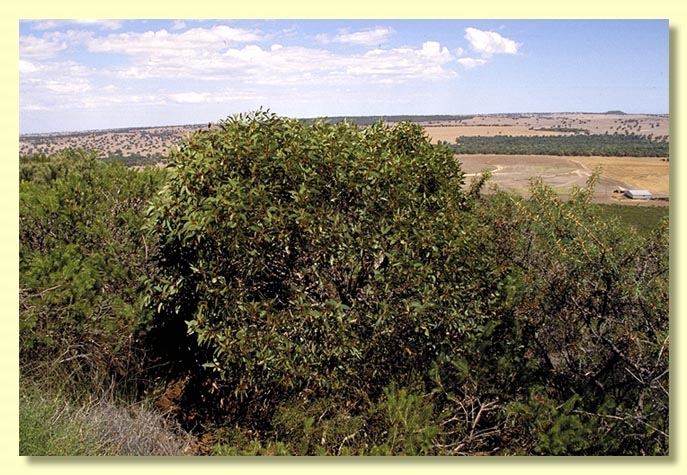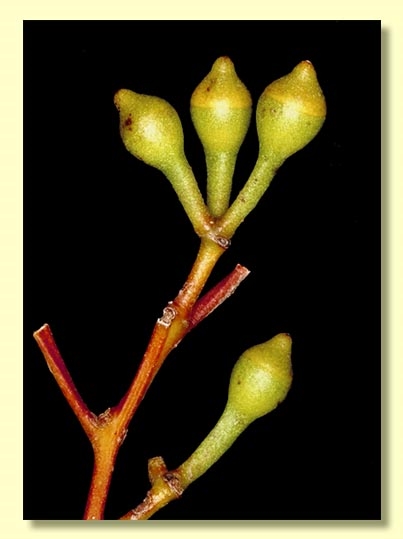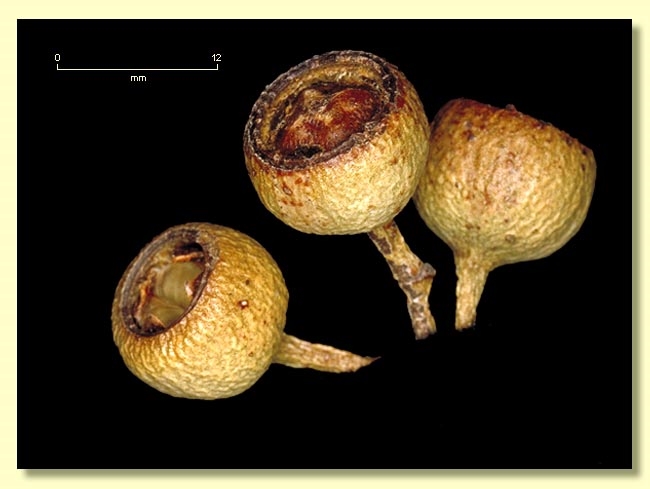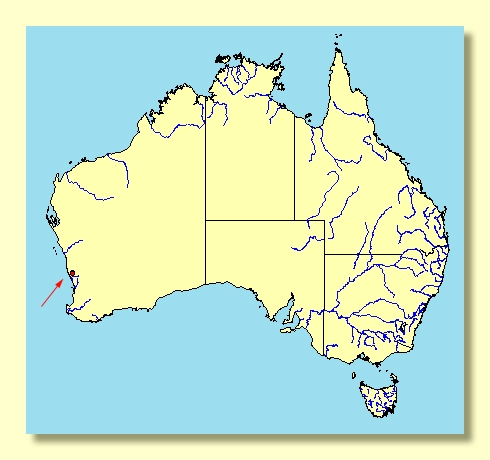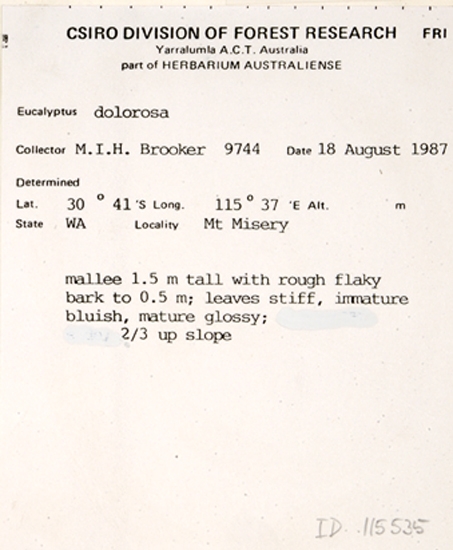Euclid - Online edition
Eucalyptus dolorosa
Eucalyptus | Eucalyptus | Longistylus | Frutices | Diversiformae | Finales
Bark rough, thin and flaky to hard and furrowed, grey to yellowish brown, for ca 0.5 m of trunk, smooth above, pale grey-brown.
Branchlets lacking oil glands in the pith.
Juvenile growth (coppice or field seedlings to 50 cm): stems square in cross-section; juvenile leaves on coppice growth petiolate, alternate, ovate to lanceolate, 6.5–11.5 cm long, 2.5–4 cm wide, undulate, dull, bluish.
Adult leaves alternate, petioles 0.9–2 cm long; blade lanceolate to falcate, 7.5–10.2 cm long, 1.4–2.3 cm wide, base tapering to petiole, margin entire, apex pointed, green and glossy, side-veins acute, reticulation sparse to moderate, intramarginal vein remote from margin, oil glands island, several per areole.
Inflorescence apparently terminal compound, peduncles 0.4–1.5 cm long, buds 7 per umbel, pedicels 0.4–0.9 cm long. Mature buds ovoid, 0.7–0.8 cm long, 0.5–0.6 cm wide, scar absent, the single operculum conical, outer stamens held obliquely, inner inflexed, anthers oblong, versatile, dorsifixed, dehiscing by longitudinal slits not confluent, style long and straight, stigma tapered, locules 4(5), the placentae each with 2 vertical rows of ovules. Flowers white.
Fruit pedicellate (pedicels 0.7–1 cm long), truncate-globose, 1–1.2 cm long, 1.1–1.4 cm wide, disc descending vertically, valves 4(5), near rim level.
Seeds brown, 2–4 mm long, obliquely pyramidal, dorsal surface minutely roughened, curved to meet terminal hilum, margin expanded to form a ragged flange.
Cultivated seedlings (measured at ca node 10): cotyledons reniform; stems rounded to square in cross-section; leaves opposite, sessile, amplexicaul to rounded and discolorous for 6 or 7 nodes then becoming shortly petiolate, then sub-opposite to alternate by ca node 8 or 9, ovate, 6–11 cm long, 2.5–5.2 cm wide, dull, mid-green, concolorous, the margins crinkled and minutely denticulate.
Flowering has been recorded in February.
A low, straggly mallee known only from Mt Misery, between Cataby and Dandaragan, north of Perth, where it consists of about five small clumps on the south side of a breakaway and on the flat top. The bark is thin, rough on the older stems and the adult leaves are slightly glossy, green and the inflorescences apparently terminal to the branchlets.
Eucalyptus dolorosa belongs in Eucalyptus subgenus Eucalyptus series Diversiformes, a group of mallee species characterised by adult leaves held ± erect, buds with a single operculum (hence no operculum scar), oblong anthers that shed pollen by two separate slits, ovules arranged in two rows on the placenta, pyramidal seed and seedling leaves opposite for quite a few pairs. Because of its terminal inflorescence E. dolorosa is placed in the monotypic subseries Finales.
E. dolorosa is thus not closely related to other species in series Diversiformae, although the flanged seeds indicate its affinity with species such as E. buprestium, E. erectifolia and E. pachyloma. All other Western Australian species in subgenus Eucalyptus have axillary inflorescences.
Eucalyptus dolorosa is listed as "Endangered" under the Australian Government Environment Protection and Biodiversity Conservation Act 1999 (EPBC Act). Further information may be found at this web address:
http://www.environment.gov.au/cgi-bin/sprat/public/sprat.pl

